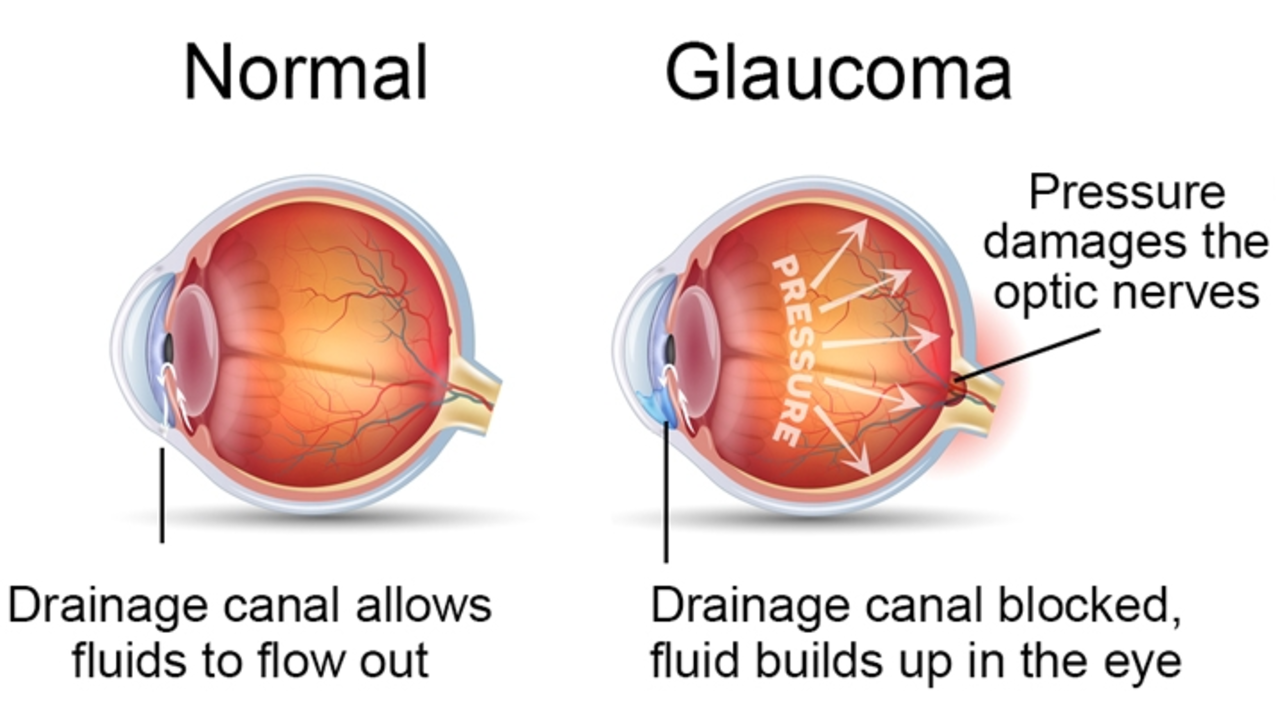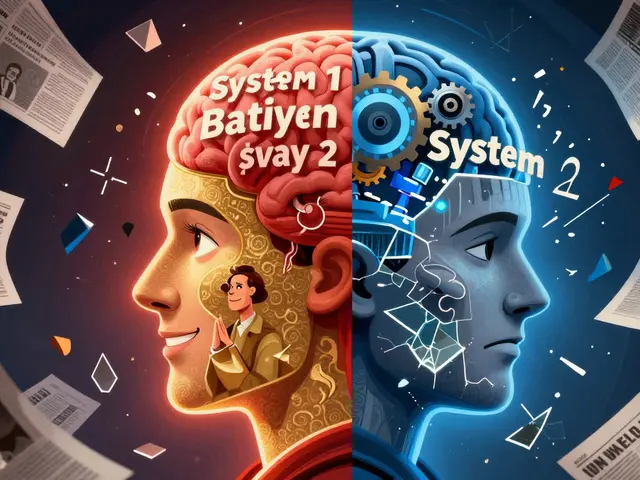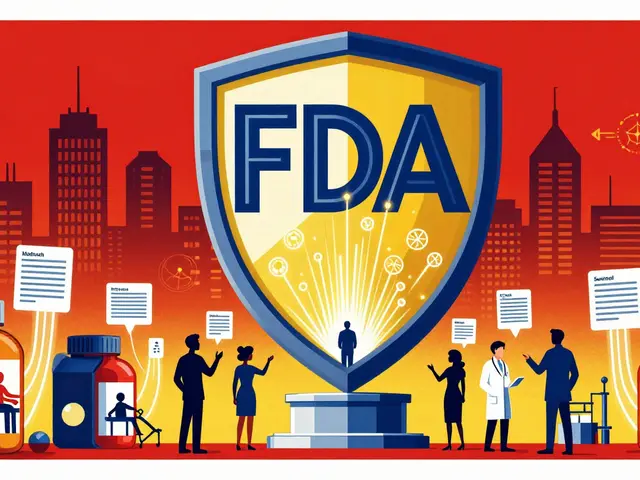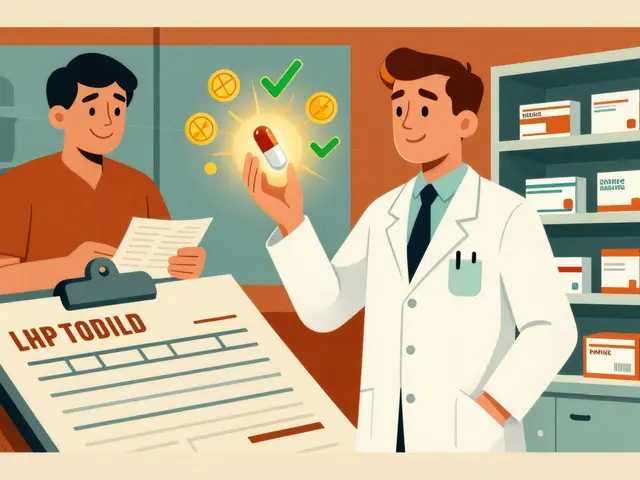Understanding Glaucoma: A Silent Thief of Sight
As a blogger who's been diving deep into health and wellness topics, I feel it's important to shine a spotlight on glaucoma. After all, it's often referred to as the 'silent thief of sight'. This is because glaucoma can slowly and progressively steal your vision without any warning signs. It's a leading cause of irreversible blindness worldwide, making it a significant public health concern. It mainly affects the elderly, but it can strike at any age. This section is all about getting a firm grip on what glaucoma is and why it's crucial to be aware of it.
Initial Symptoms: What to Look Out For
Glaucoma is often tricky to diagnose in its early stages, mainly because it may not present any noticeable symptoms. However, knowing what to look out for can make a huge difference. The initial symptoms vary depending on the type of glaucoma. Open-angle glaucoma, the most common form, typically shows no symptoms until significant vision loss occurs. However, in some cases, you might experience blind spots in your peripheral (side) vision. Angle-closure glaucoma, on the other hand, can cause severe eye pain, nausea, and sudden visual disturbances. It's essential to listen to your body and consult your eye doctor if you notice anything unusual.
Advanced Glaucoma Symptoms: When the Situation Gets Critical
As glaucoma progresses, the symptoms become more noticeable and severe. This can include tunnel vision, halos around lights, and progressive vision loss. It's frightening to think about, but understanding these symptoms can help you take prompt action. If these signs start to appear, it means that the disease has already caused significant damage. That's why it's so important to have regular eye check-ups, especially if you're over the age of 60 or have a family history of the disease. Remember, early detection can greatly help manage this disease.
Glaucoma Risk Factors: Understanding Your Vulnerability
Just like with many other health conditions, certain factors can increase your risk of developing glaucoma. These include age, family history, race, and certain medical conditions like diabetes. Even certain physical characteristics, such as high internal eye pressure or thin corneas, can put you at risk. It's important to consult your eye doctor if you have one or more of these risk factors. They can guide you on what steps to take to protect your eyesight.
Importance of Regular Eye Exams: Prevention is Better Than Cure
With glaucoma, prevention truly is better than cure. Regular eye exams are absolutely essential in detecting the disease in its early stages. Your eye doctor can measure your intraocular pressure, inspect your eye's drainage angle, evaluate any optic nerve damage, and test your peripheral vision. These tests can help detect glaucoma even before symptoms appear, allowing for early interventions that can slow or prevent vision loss. I cannot stress enough how crucial these eye exams are in protecting your vision.
Writing about glaucoma has made me realize just how essential our vision is, and how easily we can take it for granted. It's my hope that this article has shed some light on this 'silent thief of sight' and that it encourages you to schedule your next eye exam. Remember, early detection is key, and your eyes deserve the best care possible.






Amy Reynal
July 17, 2023 AT 05:58ok so i just got my first pair of glasses at 28 and now i’m paranoid every time i blink like am i losing my peripheral vision or is that just my cat walking by??
glaucoma sounds like the internet’s favorite horror movie but tbh i’ve never heard anyone say ‘hey i got tested for it’ like it’s a routine thing, you know? like we get teeth cleaned but eyes? nah.
also why is it always ‘silent thief’? why not ‘sneaky ninja of sight’? just sayin’. i need more drama in my eye health.
anyway, i’m scheduling an appointment. if i go blind i’m blaming the guy who told me ‘you’re too young for that’.
Erick Horn
July 18, 2023 AT 07:02Regular eye exams? LOL. You think your optometrist gives a damn? They just want your credit card.
Lidia Hertel
July 18, 2023 AT 19:31omg yes!! i’m so glad someone finally talked about this 😭🫂
i lost my grandma to this and she never complained until she couldn’t see the photos of her grandkids anymore
please please please go get checked even if you think you’re fine
my eye doc was like ‘you’re lucky you came in’ and i was like ‘wait what??’
we need to normalize this like we do mammograms and pap smears!!
your eyes are your windows to the world, don’t wait for the curtains to close 💜👁️
Chris Bock
July 19, 2023 AT 15:54Knowledge is power. But power without action is just noise.
Alyson Knisel
July 19, 2023 AT 21:12i think sometimes we forget how fragile our bodies are like we think we’re invincible until one day you blink and the world is blurry
and then you realize you never really took care of yourself
not just eyes but everything
we’re all just walking around with invisible timers
Jelisa Cameron- Humphrey
July 21, 2023 AT 15:08Per the American Academy of Ophthalmology (AAO) guidelines, intraocular pressure (IOP) thresholds >21 mmHg in conjunction with optic nerve head asymmetry and retinal nerve fiber layer thinning on OCT are diagnostic red flags for primary open-angle glaucoma (POAG), especially in high-risk demographics.
Additionally, pattern deviation indices on Humphrey visual field testing should be monitored longitudinally - early detection hinges on longitudinal data aggregation, not reactive symptomology.
Primary care providers must integrate ocular screening into annual wellness visits. Prevention > intervention. End of story.
Lee Lach
July 22, 2023 AT 16:59Let’s be real - this whole ‘silent thief’ narrative is a pharmaceutical marketing ploy.
Who benefits from millions of people getting annual eye exams? The labs. The clinics. The insurance companies.
And don’t get me started on ‘family history’ - that’s just guilt-tripping people into spending money.
Meanwhile, real vision problems come from staring at screens all day, not genetics.
They’re selling fear, not solutions.
Tracy McKee
July 24, 2023 AT 15:32you people are so weak you need to get checked every year for everything
my grandpa never went to a doctor and lived to 98
stop being drama queens
your eyes will be fine if you stop crying over them
Abigail M. Bautista
July 24, 2023 AT 18:49yeah i guess
Rohan Puri
July 26, 2023 AT 10:35in india we dont even have eye doctors in villages
so what u say about glaucoma
people just live with it
or go blind
no big deal
Mandeep Singh
July 27, 2023 AT 12:38westerners always act like they’re the only ones who care about health
we have ayurveda and centuries of wisdom
you just need to stop eating processed sugar and you’ll be fine
stop buying into corporate medicine
Chris Bellante
July 27, 2023 AT 23:06in my village back home we say the eyes are the mirror of the soul - if the mirror cracks, you don’t wait for the whole thing to shatter.
we don’t have fancy machines but we have elders who notice when someone stops recognizing faces or bumps into things.
they don’t call it glaucoma - they call it ‘the slow fade’ and they make sure the person sits in the sun every morning and eats moringa.
maybe the real cure isn’t in a lab, it’s in community.
Nicole Manlapaz
July 28, 2023 AT 05:40you’re not alone!! i was terrified to go in but my eye doc was so gentle and actually listened to me
and guess what? i had zero damage!!
just high pressure but i’m on drops now and i feel like a superhero
seriously, if you’re reading this and you’ve been putting it off - just go.
you’re worth the 20 minutes.
and if you’re scared? bring a friend. i did. we cried and laughed and got ice cream after.
you got this 💪👁️💖
Frederick Staal
July 28, 2023 AT 23:37It is a tragic irony that the very institutions designed to preserve human health have become commodified engines of anxiety.
The commodification of preventative care transforms medical necessity into performative virtue.
One must ask: Who profits when the individual is made to feel perpetually at risk?
And more importantly - who is silenced when systemic access is denied?
It is not merely glaucoma we are discussing - it is the erosion of collective responsibility.
erin orina
July 29, 2023 AT 12:19thank you for writing this ❤️
i’ve been putting off my appointment for 3 years because i thought ‘i’m fine’
but now i’m going next week
and i’m bringing my mom too
she’s 68 and never went
we’re doing it together
you’re not just sharing info - you’re changing lives
Lisa Uhlyarik
July 30, 2023 AT 01:16you think you’re helping but you’re just feeding the fear machine
everyone knows you’re supposed to get eye exams but nobody does it
so why are you acting like you’re the first person to ever mention it?
you’re not special
you’re just loud
Kelley Akers
July 31, 2023 AT 00:50how quaint. another privileged American with a $200 eye exam and a blog post.
in my circle, we don’t talk about glaucoma - we talk about survival.
you can’t cure poverty with a slit lamp.
but hey, keep posting. the algorithm loves your guilt.